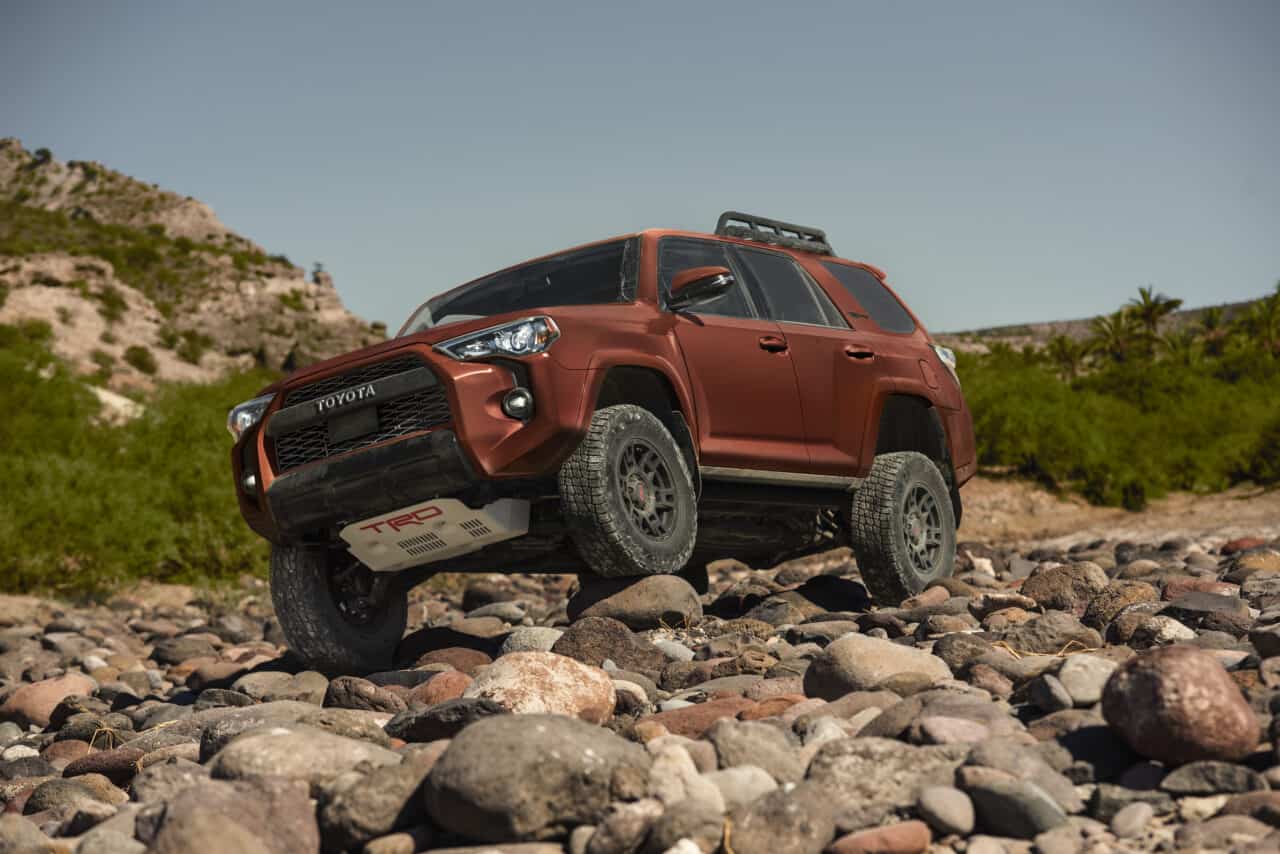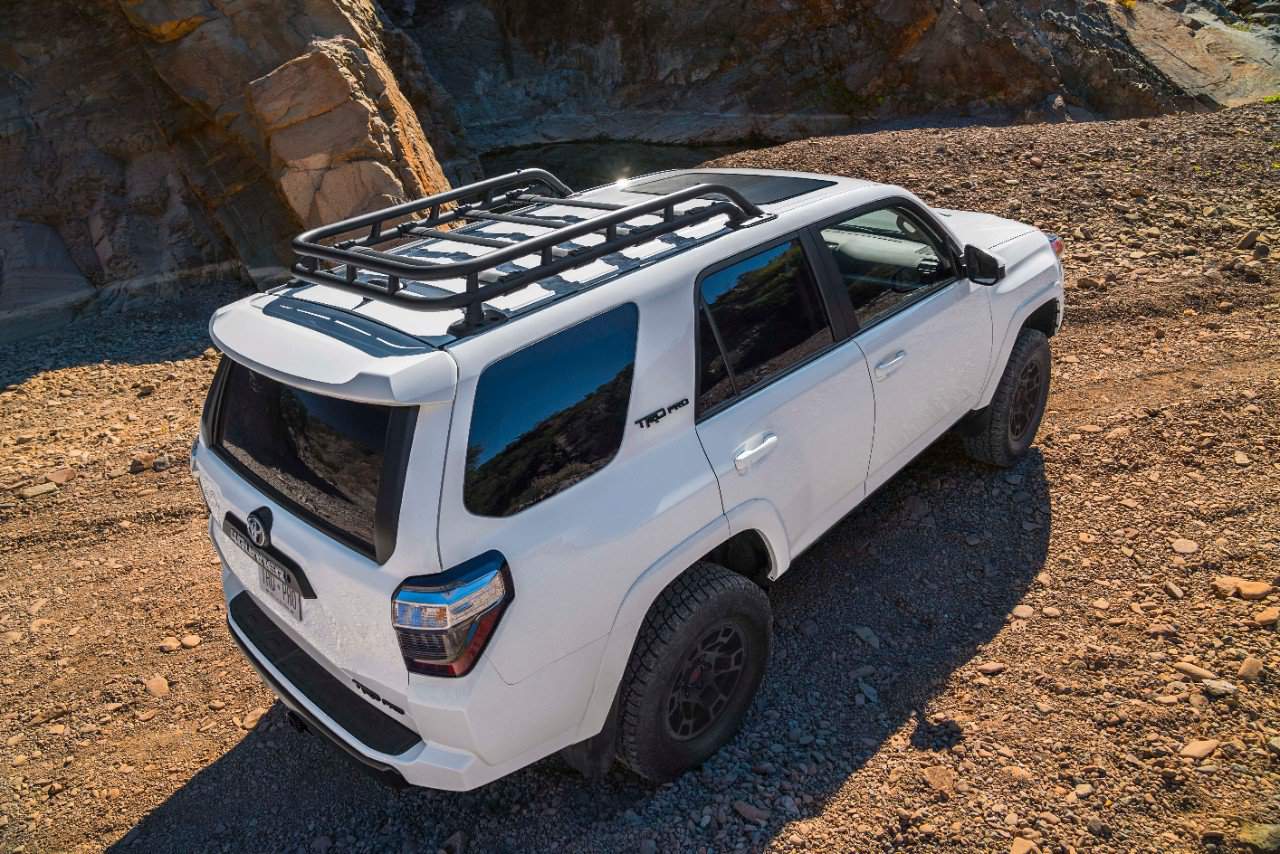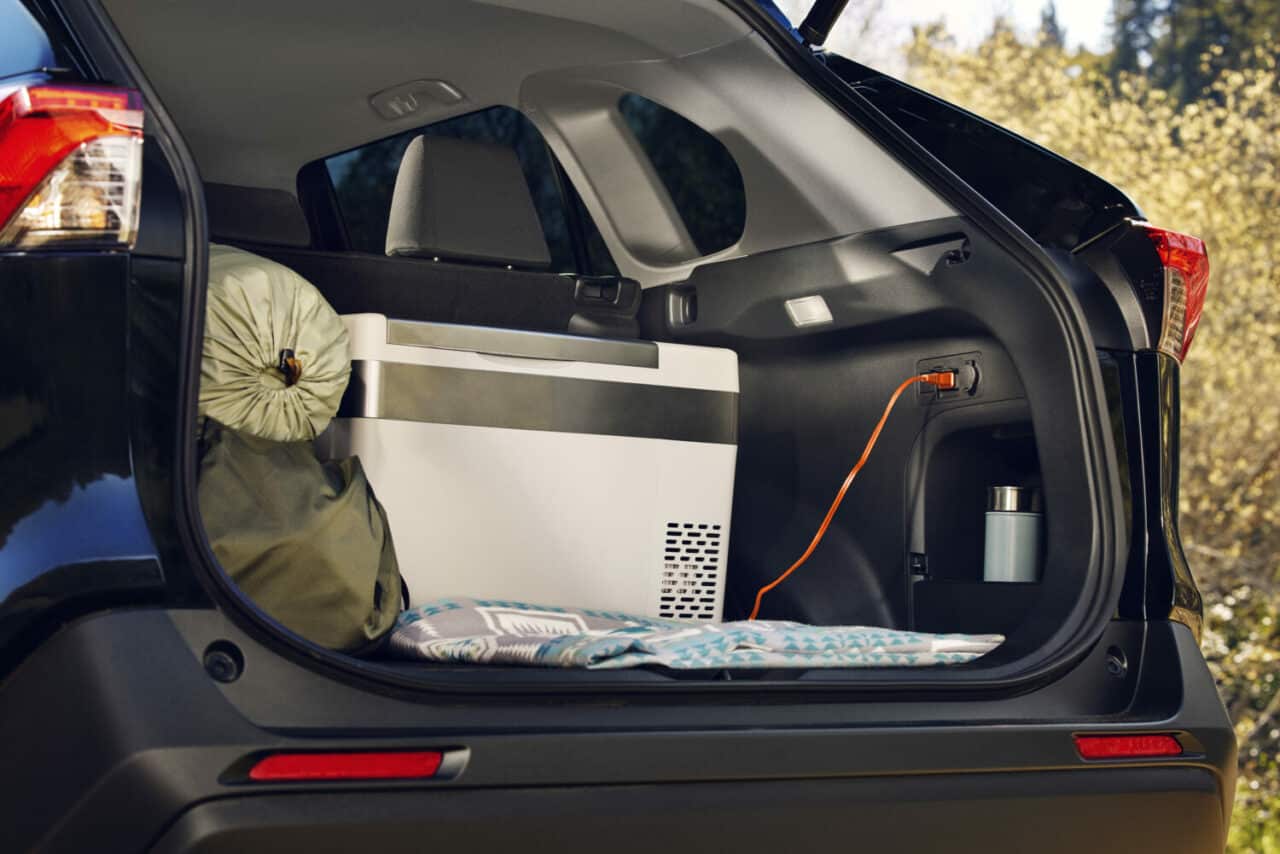When to Use A-TRAC: Mastering Traction on Rough Terrain
Discover how Toyota’s A-TRAC system revolutionizes off-road driving in their vehicles. Learn when and why this advanced technology makes a significant difference in your driving experience.

Toyota’s A-TRAC (Active Traction Control) system is best utilized in off-road conditions where wheel slip is likely, such as on muddy, sandy, or rocky terrains. Engaging A-TRAC enhances grip and stability by distributing power to the wheels with the most traction, making it ideal for challenging landscapes and ensuring a safer, more controlled off-road driving experience.
Related Articles
Understanding A-TRAC and Its Functionality
When it comes to navigating challenging driving conditions, understanding the role and operation of A-TRAC can significantly enhance your vehicle’s stability and control.
Definition of A-TRAC
A-TRAC stands for Active Traction Control. It is an advanced system designed to improve your vehicle’s grip and stability on slippery or uneven surfaces.
By actively monitoring wheel speed and applying brake pressure to individual wheels, A-TRAC prevents a spinning wheel and ensures that power is distributed efficiently.
Active Traction Control System
The Active Traction Control System is engineered for situations where traction is compromised. When you engage A-TRAC, it will automatically modulate the throttle and brakes, allowing the wheels with the most grip to receive the most power.
This ensures that you maintain control, especially during off-road conditions or when one or more wheels lose contact with the ground.

Differences Between A-TRAC, TRAC, and Other Traction Systems
A-TRAC: Focuses specifically on off-road scenarios where maximum traction is essential. It’s an active system that adjusts to the terrain.
TRAC: Refers to standard traction control systems that serve to prevent slip in everyday driving conditions by reducing engine power or applying brakes to specific wheels.
Other Traction Systems: These can range from electronic stability control (ESC) to more specialized systems like limited slip differential (LSD) and locking rear differential. For advanced offroad situations you often hear about front and rear lockers or at least a locker in the rear diff – rear axles.
Operational Mechanics of A-TRAC
The Active Traction Control (A-TRAC) system enhances traction by precisely modulating brake fluid pressure and optimizing electronic brake force distribution. Understanding these mechanisms allows for better utilization of your vehicle’s capabilities.
How A-TRAC Modulates Brake Fluid Pressure
When you press the brake pedal, A-TRAC monitors and adjusts the brake fluid pressure to each wheel.
If a wheel begins to lose traction, A-TRAC selectively applies the brakes to that specific wheel, thereby redirecting torque to the wheels with better grip.
This operation involves complex algorithms but results in improved stability and traction control for your vehicle.
Step 1: You encounter traction loss in one or more wheels.
Step 2: A-TRAC detects this slip through sensors.
Step 3: The system adjusts brake fluid pressure, applying braking to wheels with reduced traction.
Step 4: Other wheels receive more torque, improving overall traction.
The Role of Electronic Brake Force Distribution
Electronic Brake Force Distribution (EBD) is integrated within the A-TRAC system to enhance its functionality. EBD ensures that each wheel receives the appropriate level of brake force.
This precise distribution of brake force not only contributes to better vehicle control but also plays a crucial role during traction loss, working alongside A-TRAC to prevent the wheels from slipping.
Optimal brake force is applied to each wheel.
EBD adjusts brake pressure in relation to vehicle load and balance.
In conjunction with A-TRAC, EBD prevents slip by allocating more brake force to the wheels needing it most.
By understanding how A-TRAC modulates brake fluid pressure and the role of electronic brake force distribution, you can better appreciate the sophisticated technology at work when navigating difficult terrains.
Benefits of A-TRAC in Off-Road Conditions
Active Traction Control, or A-TRAC, is a system designed to maximize traction in challenging off-road environments.
Here, you’ll understand how A-TRAC provides stability and improved handling when you’re faced with steep hills or slippery surfaces.
A-TRAC For Steep Hill Climbing
When you approach steep off-road inclines, A-TRAC is crucial for maintaining continuous traction.
The system cleverly applies brake pressure to any wheel that’s losing grip and redirects torque to the wheels with solid contact, empowering you to ascend confidently without worrying about wheel spin or slippage.
Provides consistent wheel grip by actively modulating brake pressure.
Enhances torque distribution, ensuring wheels with the most traction receive power.
Performance on Slippery Terrain
On slippery surfaces, such as deep mud or wet trails, A-TRAC really demonstrates its effectiveness.
By automatically adjusting to changes in the terrain under each wheel, it ensures that your vehicle remains stable and responsive.
Adapts in real-time to varying degrees of tire slip.
Helps maintain steady forward motion across mud, deep sand, and other challenging terrains.
Integration of A-TRAC With Vehicle Dynamics
When you’re navigating difficult terrain, the integration of Active Traction Control (A-TRAC) with your vehicle’s dynamics is crucial for maintaining control and stability.
Interaction With Stability Control Systems
A-TRAC functions in concert with your vehicle’s stability control systems. It continuously monitors and adjusts the power sent to each wheel, ensuring optimal grip during acceleration, especially on uneven surfaces.
This means if a wheel loses contact with the ground, A-TRAC reduces the power to that wheel, allowing for maintained traction without compromising your vehicle’s stability.
Front differential: A-TRAC manages the power distribution to the front wheels, working to prevent the loss of steering control.
Rear differential: When A-TRAC detects slippage, it precisely controls the power to the rear wheels, enhancing the vehicle’s stability.
Working With Front and Rear Differential Lockers

With A-TRAC, you get a nuanced approach to utilizing both front and rear lockers:
Front Locker: When A-TRAC is enabled, the front locker can be engaged to lock the front differential if traction is lost and more direct power to the front wheels is needed.
Rear Locker: The system also manages the locking rear differential, often referred to as a rear locker, ensuring that both rear wheels are turning at the same speed for increased traction.
By integrating with these lockers, A-TRAC improves your vehicle’s ability to tackle challenging terrains by preventing wheel spin and distributing torque where it’s most effective.
Remember, the goal of A-TRAC is to provide you with the necessary traction while minimizing the input required to manage vehicle dynamics under varying road conditions.
Optimizing A-TRAC for Different Driving Conditions
Activating A-TRAC (Active Traction Control) effectively reduces wheel spin and enhances grip. It’s essential to adjust A-TRAC settings in response to the varying challenges different terrains present.
Adjusting A-TRAC for Various Terrain Types
Mud: Increase A-TRAC sensitivity to detect slipping wheels quicker, ensuring faster response to maintain traction.
Sand: Moderate the A-TRAC intervention as wheels may need to spin slightly for better movement.
Rock: Use a higher A-TRAC setting to prevent wheel spin, protecting undercarriage components.
Use of A-TRAC in Low Range and Crawl Control Modes
Low Range Mode: Engage A-TRAC in low range for steep or rugged terrains where a controlled power delivery to each wheel reduces the chance of getting stuck.
Crawl Control Mode: While using crawl control, which automates speed and braking, A-TRAC complements by managing the torque applied to each wheel, ensuring steady progress over slippery surfaces without excessive wheel spin.
Technical Aspects of A-TRAC
Understanding the technical aspects of A-TRAC (Active Traction Control) is crucial for maximizing your vehicle’s off-road capabilities.
This system intelligently manages the drive force among the wheels and balances engine output with braking to maintain traction on challenging terrains.
How A-TRAC Distributes Drive Force Among Wheels
When you navigate uneven surfaces, A-TRAC continually monitors the traction of all four wheels. If it detects wheel spin:
Brake Assist is applied to the slipping wheel.
Equal Power is redistributed to the wheels with more grip.
This selective braking and redistribution of force ensure optimal contact with the ground, providing same vehicle with better stability and control.
Balancing Engine Output and Braking With A-TRAC
A-TRAC excels in maintaining a fine balance between engine output and braking. Here’s how it works:
As the system senses loss of traction, it instantly modifies engine power to complement the braking force.
This synergistic relationship results in sustained momentum and maximizes the engine output without overwhelming the tires and causing slip.
By maintaining this balance, A-TRAC prevents you from becoming stuck and aids in overcoming obstacles smoothly.
Vehicle Suitability and A-TRAC Compatibility
When considering Active Traction Control, or A-TRAC, it’s important to check if your vehicle is equipped with this system and understand how it interacts with your tires.
Identifying Vehicles Equipped With A-TRAC
Your vehicle’s specifications will indicate whether it comes with A-TRAC. Notably, Toyota models such as the 4Runner, Highlander, and RAV4 often have A-TRAC as part of their off-road or all-wheel drive packages.
It’s essential to consult your owner’s manual or official dealership information to determine if your specific model has this feature.
The Compatibility of A-TRAC With Stock and Upgraded Tires
Stock Tires: The compatibility of A-TRAC with stock tires is typically ensured by the vehicle manufacturer. For example, a 4Runner with A-TRAC is designed to optimize traction even with its factory tires.
Upgraded Tires: If you decide to upgrade your tires, it’s crucial to select ones that are compatible with the A-TRAC system. Factors such as tire size, tread pattern, and rubber composition can affect how well the system detects and adapts to varying terrain conditions.
Remember, A-TRAC is calibrated for the vehicle’s original specifications, so any changes to tire size or type should be carefully considered to maintain optimal performance of the system.

User Interaction With A-TRAC
When using A-TRAC, it’s essential to know precisely how and when to engage the system to maintain control and stability of your vehicle during challenging driving conditions.
Manual Activation of A-TRAC
To manually activate A-TRAC, you’ll first need to find and push the A-TRAC button commonly situated on the dashboard or center console of your vehicle.
Pushing this button activates the system, which helps maintain optimal drive force to the wheels during forward movement, especially when traction is low.
It’s designed to assist your truck moving over uneven terrain by sending power to the wheel with the most grip.
Understanding the A-TRAC Button and Indicators
Your vehicle’s dashboard contains various indicators to inform you about the status of A-TRAC:
Active Indicator: When A-TRAC is functioning, an indicator light (usually with the A-TRAC symbol) will illuminate on your dashboard.
Engagement Indicator: There may be a separate light or notification that appears when A-TRAC is actively engaging with the wheels to control traction.
Refer to your owner’s manual for specifics on indicator symbols and meanings. The owners manual provides detailed information on how A-TRAC interacts with your vehicle’s systems to enhance traction and stability, outlining critical operational details to ensure proper use.
Recommended Reading
- What Are 2H, 4H, And 4L on 4×4 Trucks and Suvs?
- Should You Use 4×4 on the Highway?
- How to drive a 4×4 | 15 Must-Knows Tips
- What is the difference between 4X4 auto and 4X4 high?
- What Is The Difference Between Diff Lock And 4X4?
- What Does DAC Mean in a 4Runner?
- Can I Turn Off 4×4 While Driving?
- How Do I Put My Lexus GX 460 is 4WD?
- Toyota 4Runners: All The Things You Need To Know
- How Do I Know If My Lexus RX 350 Is AWD
Frequently Asked Questions
In this section, you’ll find targeted answers to common inquiries regarding the A-TRAC system and its application in Toyota vehicles, offering a clearer understanding of its use and benefits.
What are the advantages of using A-TRAC in off-road conditions?
A-TRAC (Active Traction Control) greatly enhances your vehicle’s grip in challenging off-road situations by applying brake pressure to wheels without traction and redirecting torque to those with traction. This ensures better vehicle control on various terrains off roading.
How is A-TRAC different from standard traction control systems?
Unlike standard traction control systems that mainly prevent wheel slip in daily driving conditions, A-TRAC is engineered for rugged landscapes. It actively regulates the power and braking force to each wheel, which is essential for maintaining traction on uneven trails.
Can you explain the functional distinctions between A-TRAC and crawl control?
A-TRAC is designed to manage traction on a wheel-by-wheel basis at lower speeds, improving your vehicle’s capability over demanding surfaces without driver input for throttle or brakes. In contrast, crawl control automates both acceleration and braking at very low speeds, allowing you to concentrate on steering through tough terrain.
Which Toyota models come equipped with A-TRAC technology?
A-TRAC technology is available on various Toyota models known for their off-road prowess, such as certain variants of the Tacoma, Land Cruiser, and FJ Cruiser.
Is A-TRAC available on all Toyota 4Runner trims?
Not all Toyota 4Runner trims come with A-TRAC. It’s typically reserved for the more off-road-focused trims like the TRD Off-Road and TRD Pro models.
How do the A-TRAC and DAC systems work together in the Toyota 4Runner?
In the Toyota 4Runner, A-TRAC assists with maintaining traction while on the move, whereas the Downhill Assist Control (DAC) system helps you to navigate steep descents at a controlled speed. DAC automatically applies braking to maintain a stable pace downhill without skidding.
